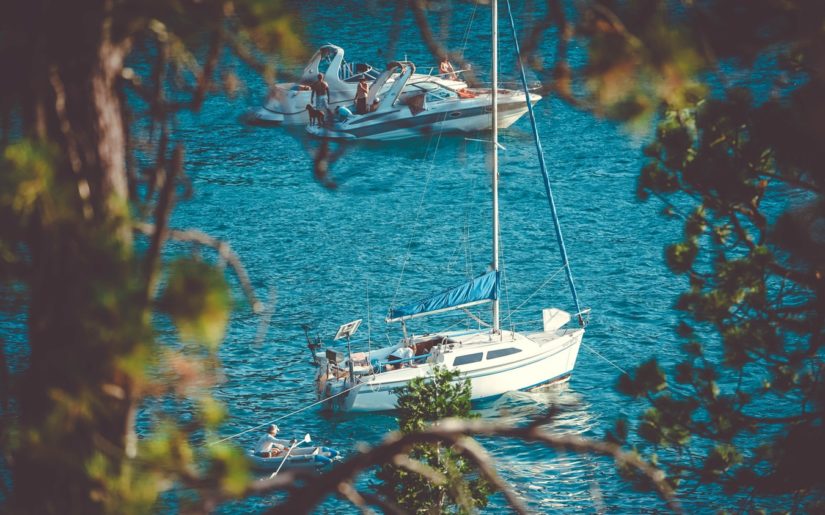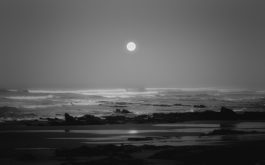Navigation Rules and Responsibilities
The navigation rules contained in this course summarize basic navigation rules for which a boat operator is responsible on inland waterways. Additional and much more in-depth rules apply regarding various types of waterways. This includes International Waters and Western Rivers, and operation in relation to commercial boats and other watercraft. It’s the responsibility of the boat operator to know and follow all of the navigation rules.
Remember to always refer to the state laws where you’ll be boating.
The ‘Rule of Responsibility’ requires all boat operators to understand and to follow the Navigation Rules at all times. The ONLY exception to following the Navigation Rules is if you MUST break a rule in order to avoid an immediate collision or danger.
For a complete listing of the Navigation Rules, refer to the document ‘Navigation Rules’ published by the Coast Guard.
Safe Boating Tip:
Even with the Navigation Rules in place, you should never presume the actions of others and always proceed with caution.
Common Violations
Like the rules that apply to driving a car on a highway, there are rules of the road that boaters must follow when on the waterways. As a boat operator, you must practice good seamanship and obey both Inland and International Navigation Rules.
The most common violations are:
- Not maintaining a proper lookout.
- Excessive speeding.
Maintaining a Proper Lookout
Boat operators must maintain a proper lookout at all times by sight and hearing. You must be able to clearly see all of your surroundings and to recognize if there is the risk of collision with another boat or obstacle. You should assign a passenger to act as your lookout ‘sidekick’ who can help you by staying alert for oncoming traffic, local hazards and swimmers.
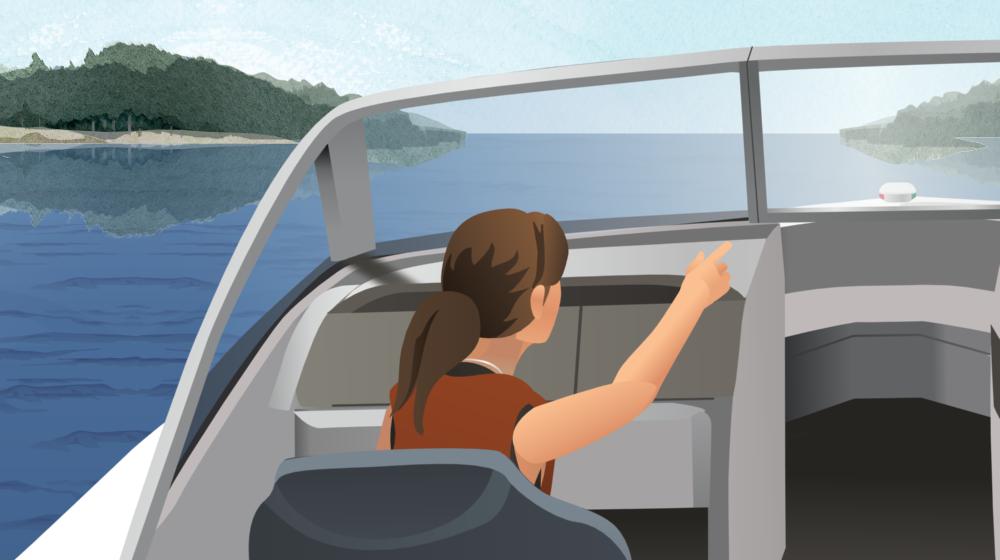
Operating at a safe speed
Boat operators must obey posted speed limits at all times and operate at a safe speed when a speed limit is not posted. A safe speed is one that allows you to take proper and effective action to avoid a collision and will allow you to stop your boat within a safe distance in relation to:
- Hazards and obstructions.
- Your distance from shore and other boat traffic.
- The boat’s draft in relation to the depth of the water.
- The dock (when returning to the dock).
- A person being towed on a tube, wakeboard, etc.
- The weather and water conditions (such as fog, rain and rough water).
- The presence of background lights at night.
- The maneuverability of your boat.
Determining Right of Way
When in boating traffic, you can determine who has the right-of-way by figuring out each boat’s position relative to the other on the water using the ‘sectors’ of navigation.
The sectors of navigation include: The port sector, the starboard sector and the stern sector.
Before determining your right-of-way, it will be helpful to familiarize yourself with important right-of-way terminology:
Stand-on craft: Boats with the right-of-way are called ‘stand-on craft’. Stand-on craft are able to maintain speed and direction when approaching other vessels.
Give-way craft: Boats that do not have the right-of-way are called ‘give-way craft’. Give-way craft must take early action to steer clear of stand-on craft, altering speed and direction to avoid a collision.
Several factors determine which craft has the right-of-way:
- The type of craft you’re operating
- The type of craft you’re approaching
- The position and direction from which other craft are approaching
- The type of waterway you’re on
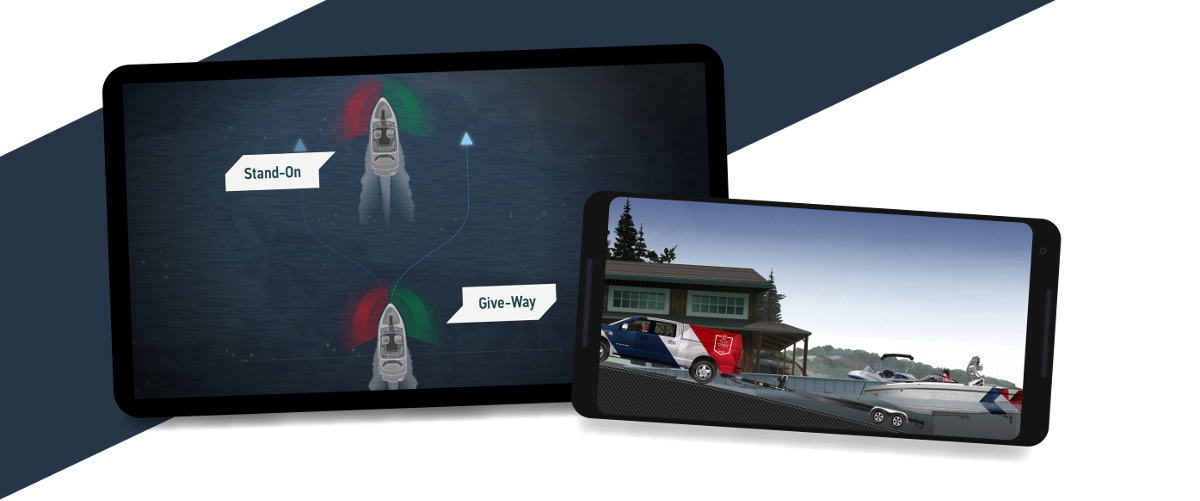
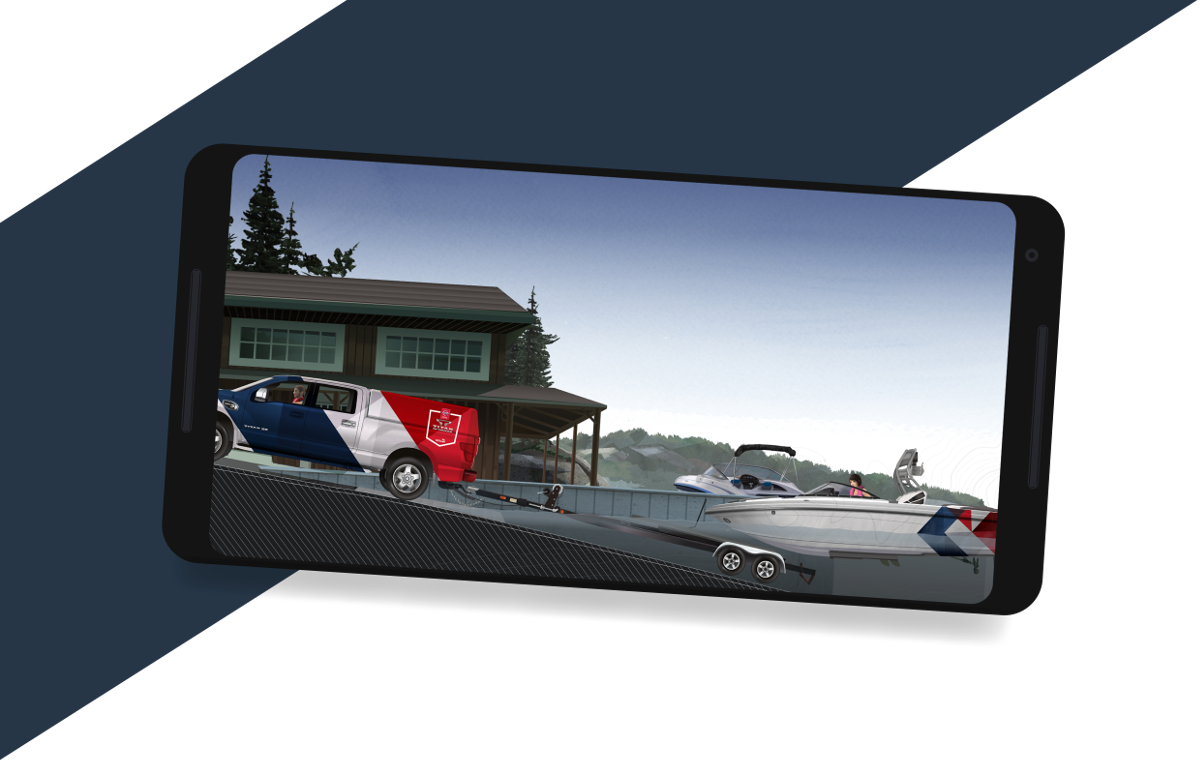
Get your Official North American
Boating License
The Official NASBLA and Transport Canada Boating Course, Test & License.
Get your Official North American
Boating License
The Official NASBLA and Transport Canada Boating
Course, Test & License.
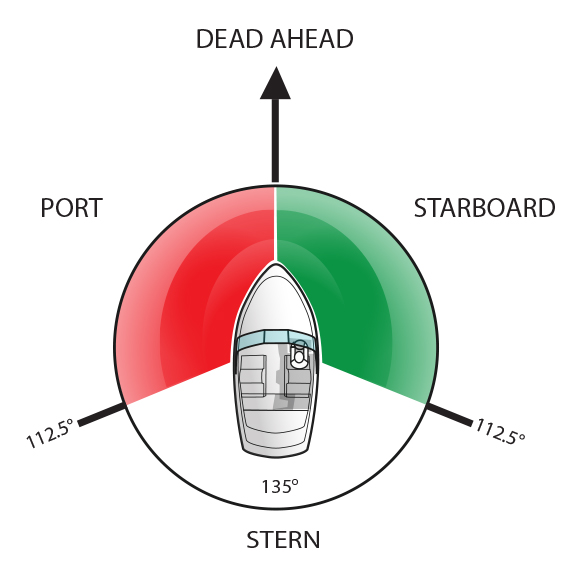
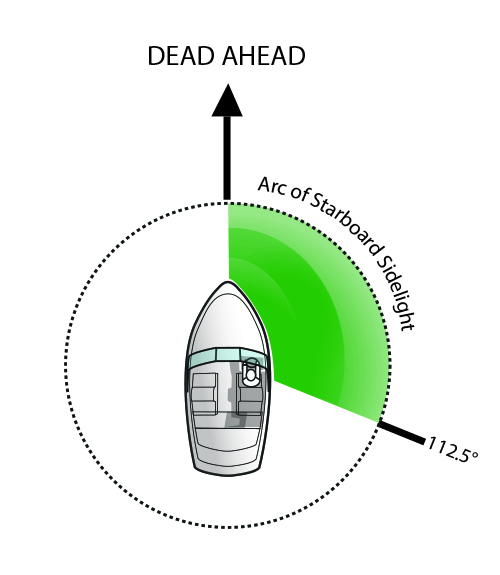
Assess risk of collision
As a boat operator, you are required to use every means possible to identify the risk of collision. If you can’t confirm by looking and listening whether the possibility of a collision exists, then you must always assume that the risk DOES EXIST and take the appropriate actions to remain safe. The Coast Guard asks all boaters to recognize that the risk of collision is still possible even if a boat changes direction, especially if it is a large boat, a tow boat or a boat at close range.
Port: If a power-driven boat approaches your boat from the port sector, maintain your course and speed with caution. You are the stand-on craft.
Starboard: If any vessel approaches your boat from the starboard sector, you must keep out of its way. You are the give-way craft.
Stern: If any vessel approaches your boat from the stern (from behind your boat) you should maintain your speed and course with caution. You are the stand-on craft.
Your starboard sector (the sector defined by your green starboard sidelight) is the ‘Danger’ or Give-Way Zone. When another boater sees your green light, he or she has the right-of-way. In this situation you will see the port side of the other boat and its red port sidelight. You must take early and substantial action to avoid a collision.
The Rule of Responsibility
The type of boat you are operating and the types of boats you are approaching determine whether or not you have the right-of-way.
-
-
-
- Emergency craft always have the right-of-way and all pleasure craft operators should steer clear and yield to emergency craft
- Never pass between a tug and its tow (it may be using a submerged towline)
- Keep clear of docked ferries, ferries in transit and cable ferries which operate with a submerged tow cable from the bow and stern (listen for large ship horns blasting one prolonged blast, which indicates departing a dock)
- Both powerboats and sailboats must take early and substantial action to keep clear of vessels engaged in fishing activities (those vessels operating with fishing nets and trawls)
- Power-driven vessels must keep out of the way of any vessel that is not under command
- Non-powered craft including sailboats, canoes, paddle-boats, sailboards and racing shells generally have the right-of-way over power-driven pleasure craft
- All motorized boats and sailboats under 20 m in length must steer clear of larger, less maneuverable vessels
- Sport fishing boats and waterski boats are considered maneuverable craft and operators of these must follow the same rules as all pleasure boats
-
-
Pro Tip: When you pass a fishing boat, make sure you give yourself a wide berth as there may be fishing nets that are not visible.
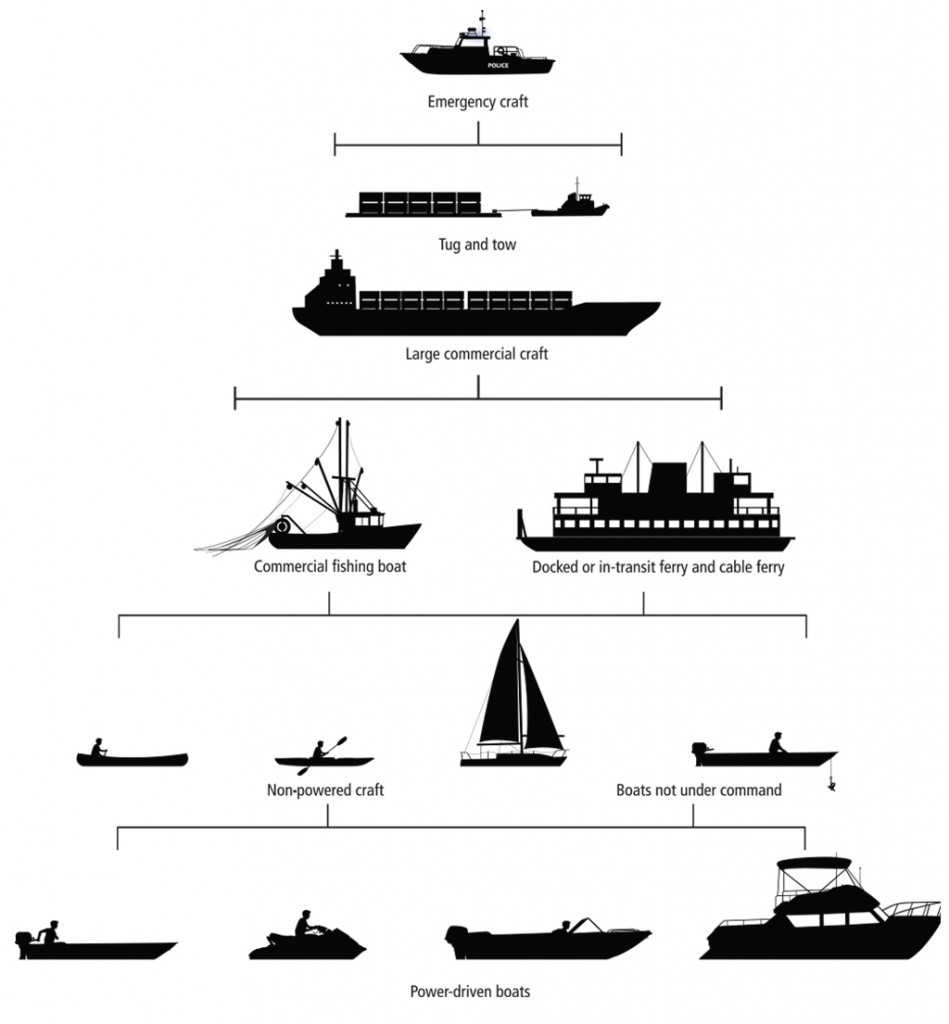
Vessel Type and Responsibility
If you’re operating a powerboat, you must give-way to the following types of boats:
- A boat that’s NOT under command, such as an anchored boat or a broken-down boat.
- A commercial fishing boat.
- A sailboat (unless it’s overtaking your boat, in which case you would maintain your speed and course as the stand-on craft).
- Any boats with restricted maneuverability, such as a towing boat, a boat that requires a large draft or a work boat picking up navigational markers.
If you’re operating a sailboat, you must give-way to the following types of boats:
- A boat that’s NOT under command, such as an anchored boat or a broken-down boat.
- Any boats with restricted maneuverability, such as a towing boat, a boat that requires a large draft or a work boat picking up navigational markers.
- A commercial fishing boat.
If you’re operating a commercial fishing boat, you must give-way to the following types of boats:
- A boat that’s NOT under command, such as an anchored boat or a broken-down boat.
- Any boat with restricted maneuverability, such as a towing boat, a boat that requires a large draft or a work boat picking up navigational markers.
Head-On APproach
When power-driven boats approach each other head-on, neither boat has the right-of-way.
Both operators (A and B) must take early and substantial action to steer clear of each other and steer to starboard (to the right) as soon as possible in order to avoid a collision.
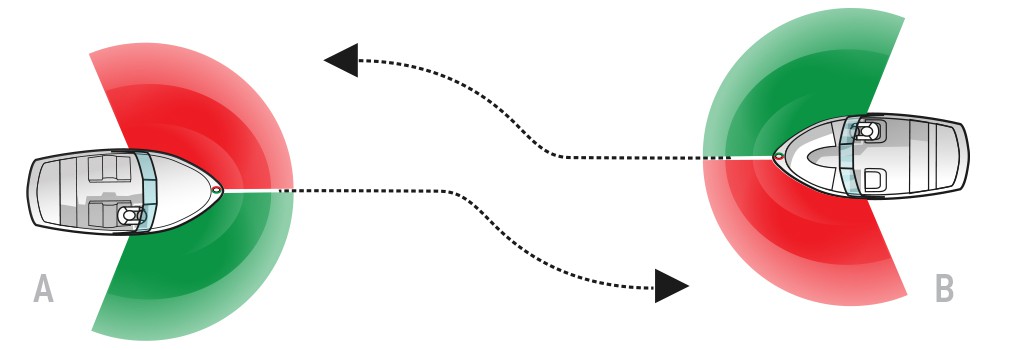
Port (Left) & Starboard (Right) Approach
If a power-driven boat (B) is approaching from your port (left) sector, you are the stand-on craft (A) and have the right-of-way. You should maintain your speed and direction and be ready to take evasive action.
The approaching boat (B) must take early and substantial action action to avoid your boat by reducing its speed and changing direction.
If a power-driven boat (B) is approaching from your starboard (right) sector, you are the give-way craft and do not have the right-of-way.
You must take early and substantial action to keep well clear of the other boat by altering your speed and direction.
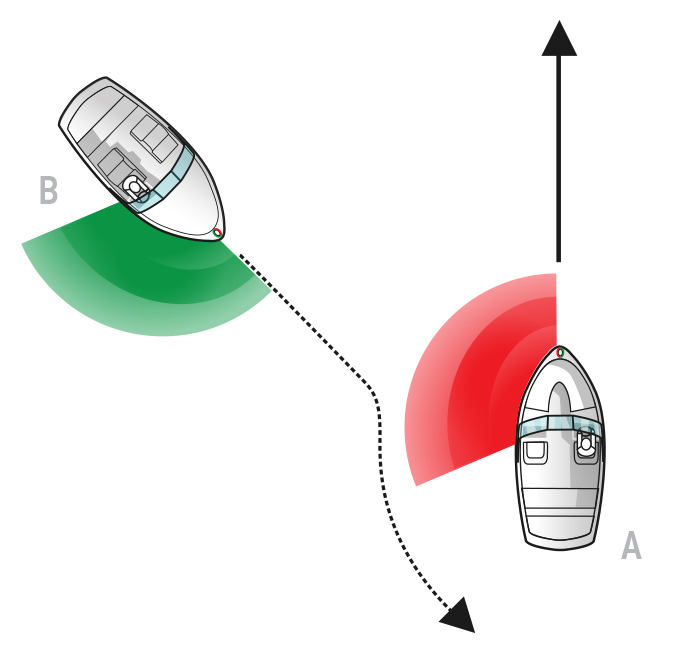
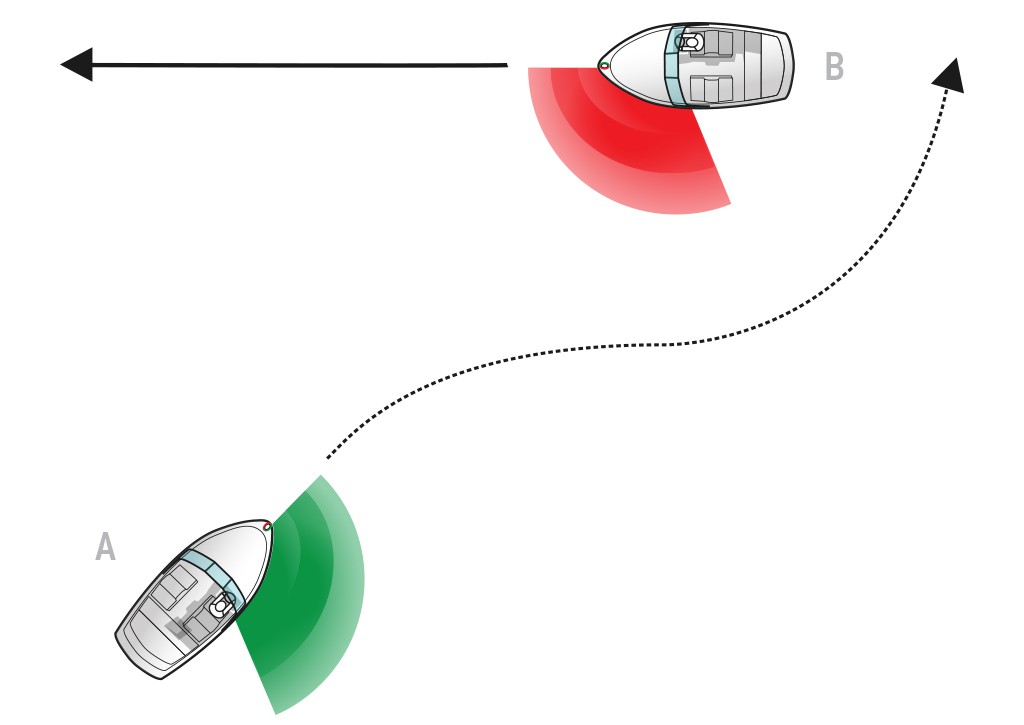
Overtaking
If you are overtaking another power-driven boat (B) from the stern (from behind) you are the give-way craft (A) and do not have the right-of-way.
You must take early and substantial action to keep well clear of the other boat by altering your speed and course. You should pass at a safe distance to the port (left) or starboard (right) side of the other boat. If a safe route exists, you should always attempt to pass the boat on the starboard side.
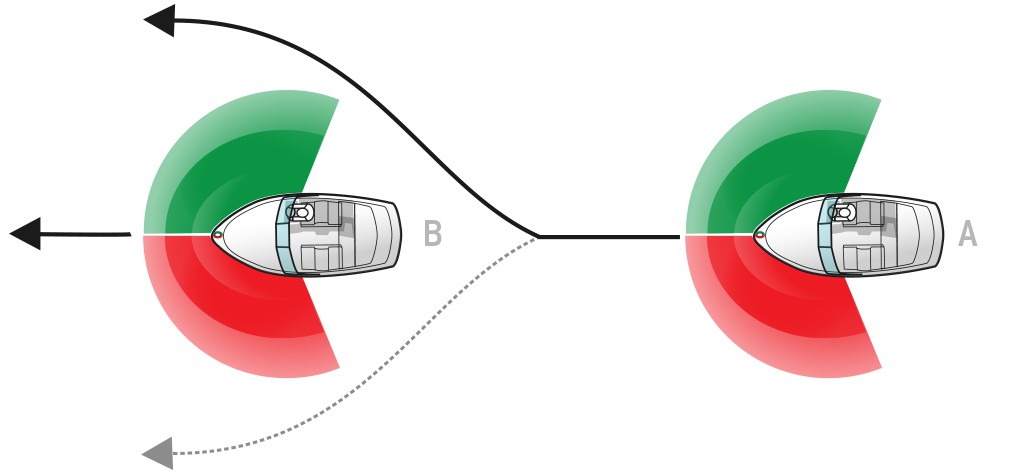
Now that you know the rules of the water, you should be ready to boat with confidence! For a quick navigation review of what your role is when you approach other boats on the water, see below:
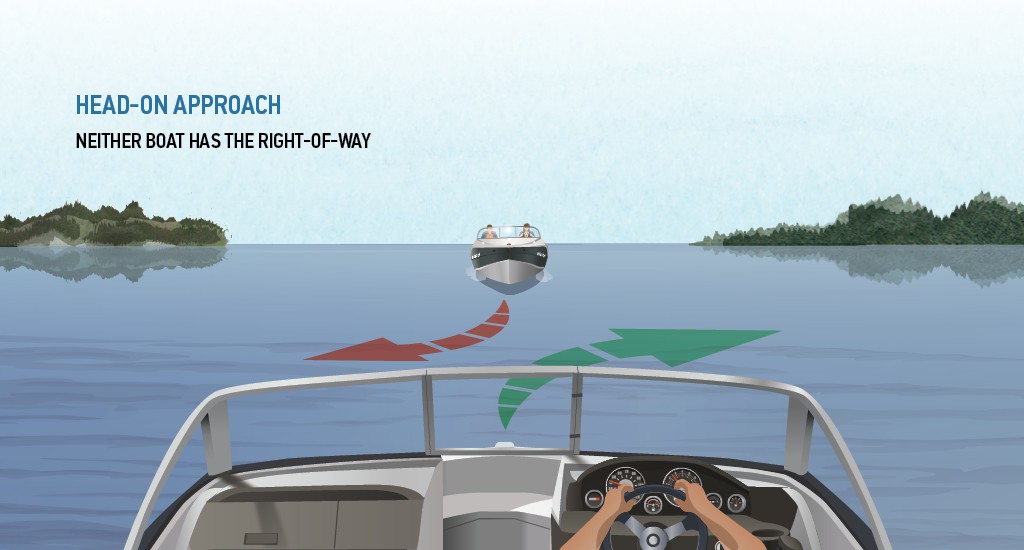
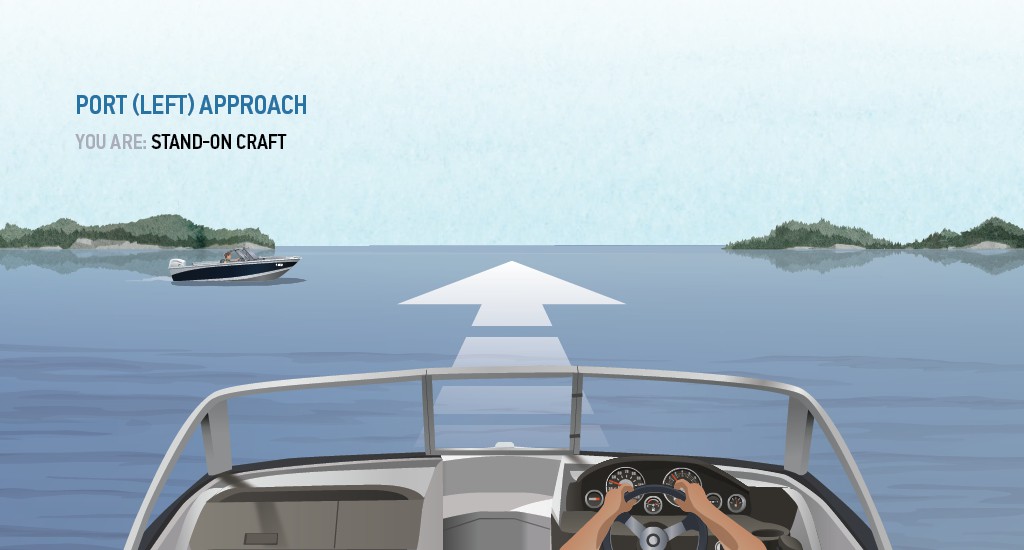
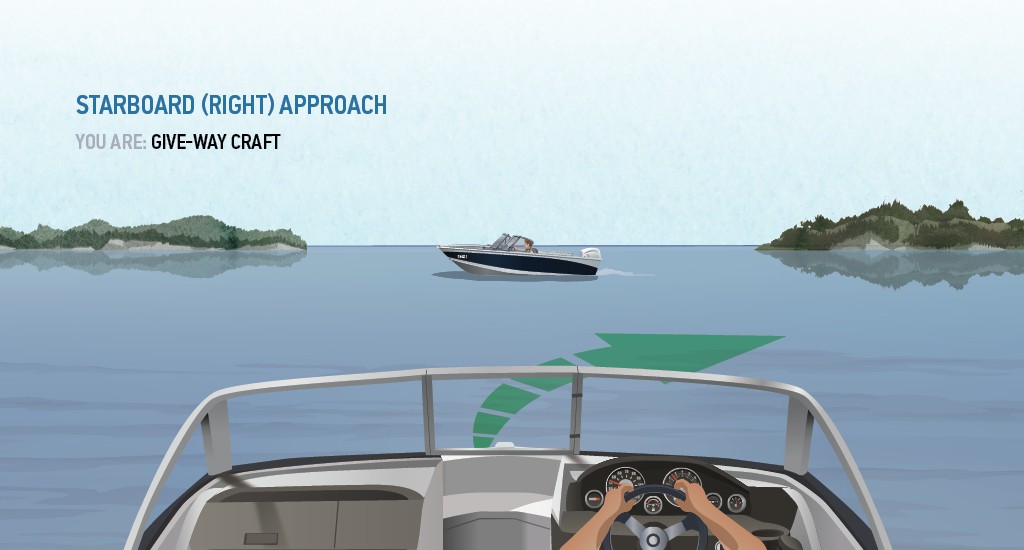
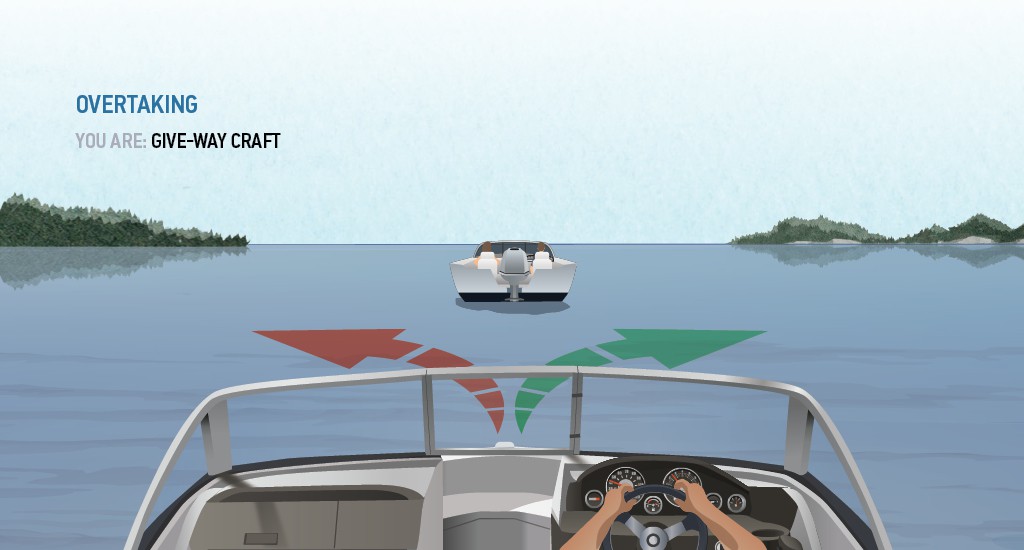
Using Sound Signals for Navigation
One short blast = I’m altering my course to starboard (to the right).
Two short blasts = I’m altering my course to port (to the left).
Three short blasts = I’m operating my boat in reverse.
Five rapid blasts = I’m unsure of the other boater’s intentions.
One long blast = I’m leaving the dock and am a motorized boat of 12 m or longer.
